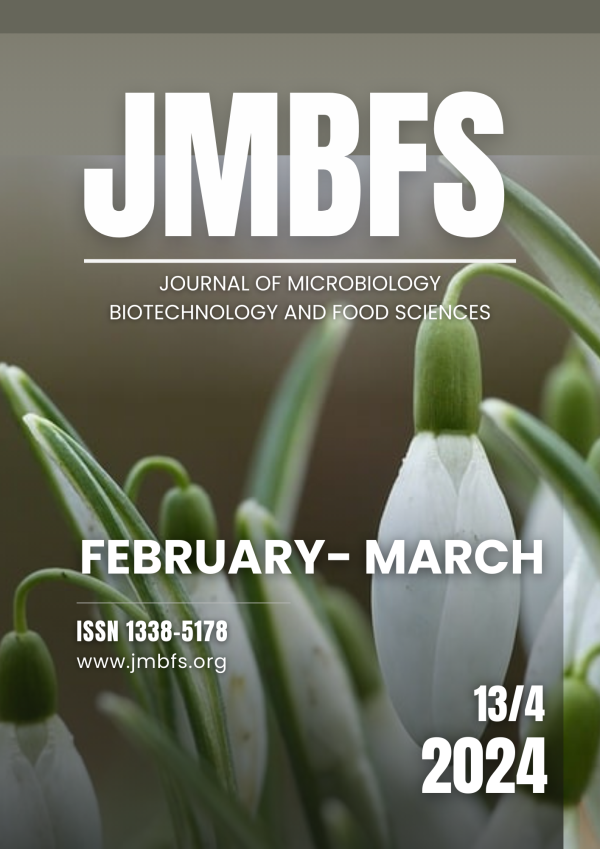DRUMSTICK TREE (Moringa oleifera) Lam. LEAF EXTRACT MEDIATED SYNTHESIS OF SILVER NANOPARTICLES AND THEIR ANTIBACTERIAL ACTIVITY AGAINST NOSOCOMIAL BACTERIAL PATHOGENS
DOI:
https://doi.org/10.55251/jmbfs.6015Keywords:
Moringa oliefera Lam., Silver nanoparticles, Multi-drug resistant, Nosocomial pathogens, TEMAbstract
Nanoparticles are unique and show different physical and chemical properties from their bulk material. Silver nanoparticles have a variety of antimicrobial applications. In the present study Silver nanoparticles (Ag-NPs) were synthesized by green methodology using the plant Moringa oliefera Lam. leaf extract. The main objective of this study was to synthesize silver nanoparticles without using any hazardous chemicals for future biomedical uses. M. oleifera Lam. is a well-known medicinal plant and is used in the preparation of different ayurvedic medicines. This plant is a rich source of polyphenols, folic acid, and beta-carotene. The effect of temperature on the synthesis of nanoparticles was also determined. The synthesized silver nanoparticles showed an absorbance peak at 430 nm with a UV-Vis spectrophotometer. X-ray diffraction study and TEM analysis exhibited the crystalline nature of silver nanoparticles and revealed that their size is 20-30 nm. An antimicrobial activity study was also performed against the most common nosocomial pathogens and the results revealed that the synthesized Ag-NPs have significant antimicrobial properties against MRSA, Escherichia coli, Klebsiella (ESBL), and Salmonella enterica. The antibacterial efficacy of silver nanoparticles was also determined using MIC and MBC. This study concluded that M. oliefera Lam. exhibited strong potential for the synthesis of silver nanoparticles. These synthesized silver nanoparticles are stable and eco-friendly and could be used to control bacterial growth of common pathogenic microorganisms including some multi-drug resistant (MDR) bacterial strains such as MRSA and Klebsiella (ESBL).
Downloads
Downloads
Published
How to Cite
Issue
Section
License
Copyright (c) 2022 Shweta Agrawal, Nidhi Pal

This work is licensed under a Creative Commons Attribution 4.0 International License.
All papers published in the Journal of Microbiology, Biotechnology and Food Sciences are published under a CC-BY licence (CC-BY 4.0). Published materials can be shared (copy and redistribute the material in any medium or format) and adapted (remix, transform, and build upon the material for any purpose, even commercially) with specifying the author(s).





